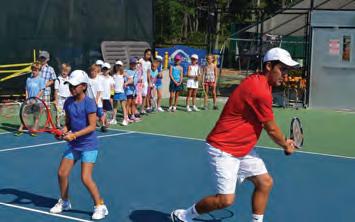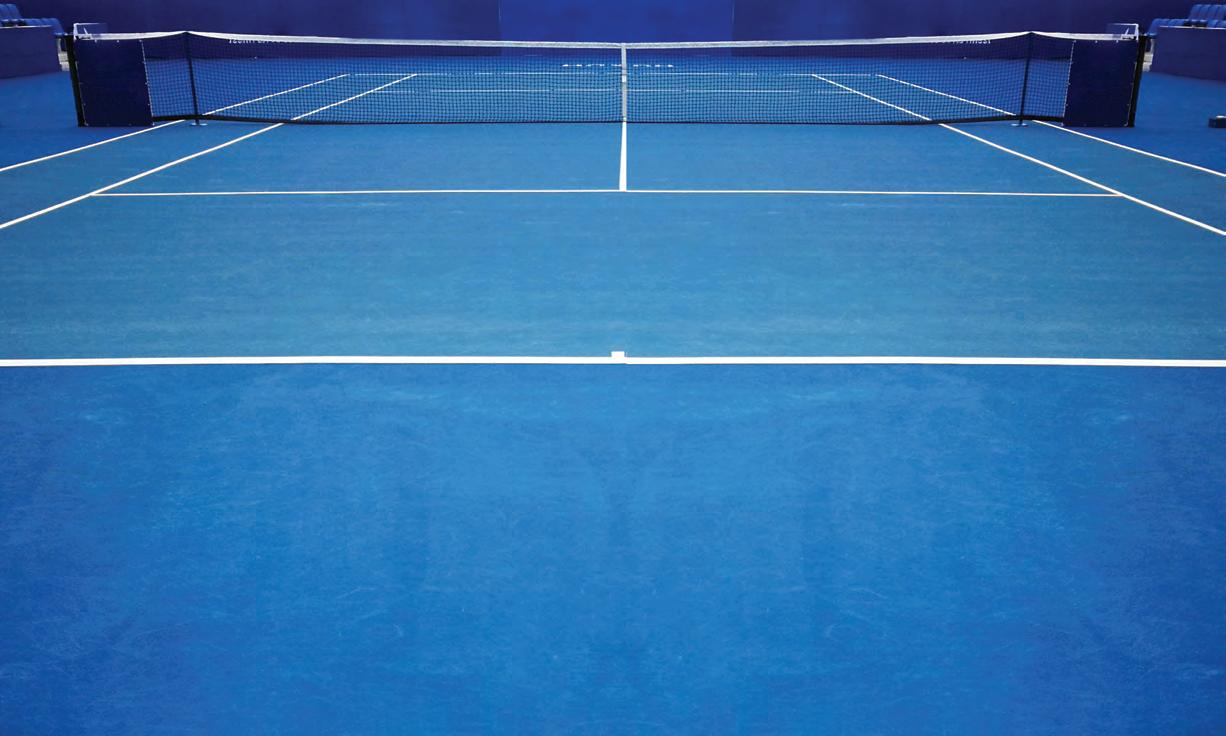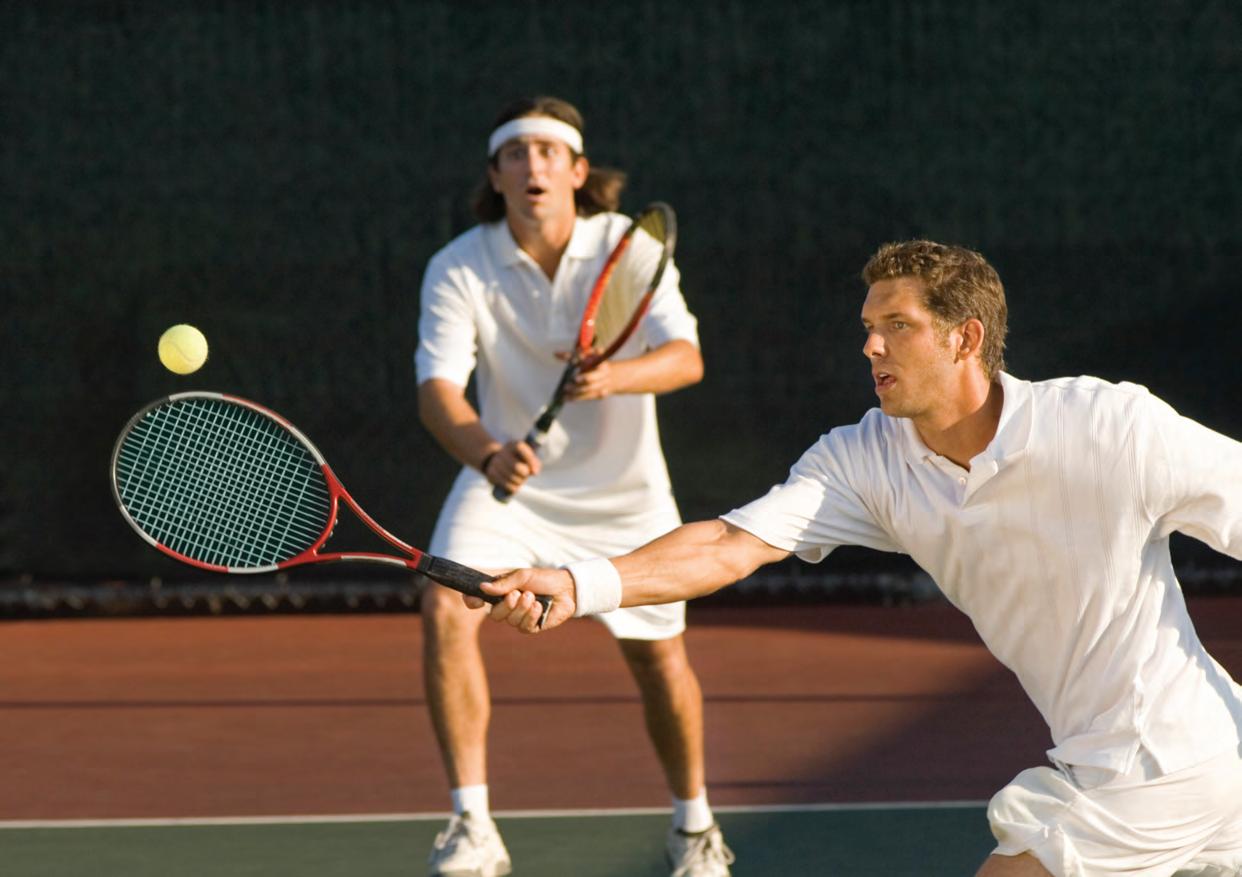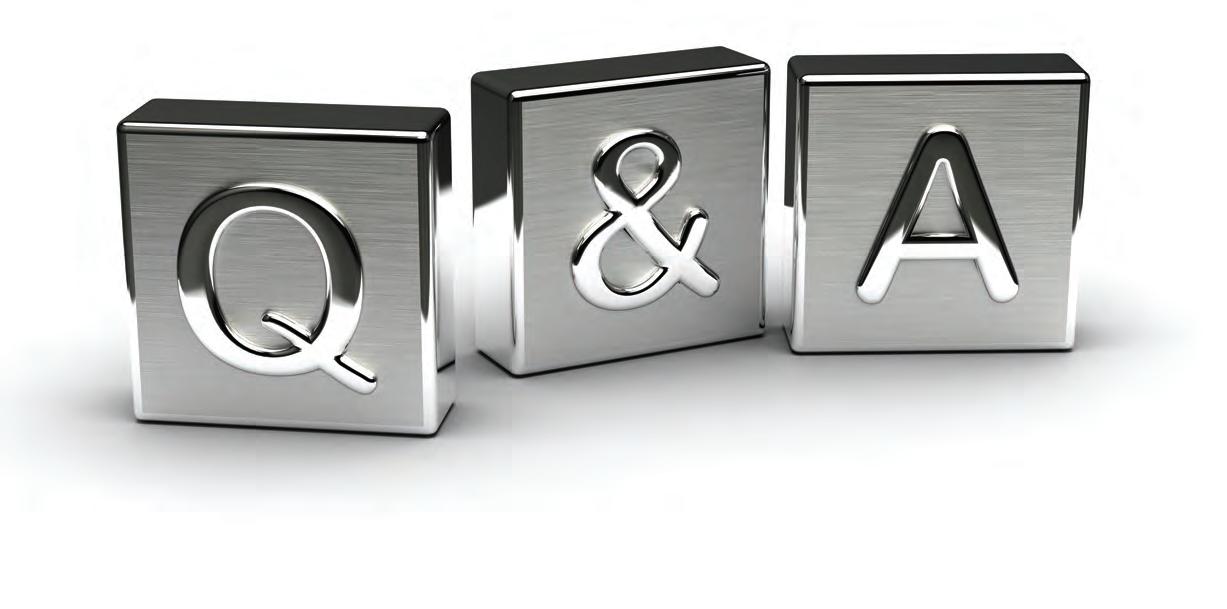
3 minute read
The Hindrance Quiz: Part Two By Barbara Wyatt
The Hindrance Quiz: Part Two
By Barbara Wyatt
Advertisement
The Hindrance Quiz checks your understanding of the ITF and USTA rules of hindrances. Correct answers are the simple quick answers, not burdened with a barrage of what-ifs or embellished with nuances on the court.
A “yes” means the action was a hindrance, and a point is awarded or replayed. A “no” means there was no hindrance and all players should focus on the match and continue playing. 6. The follow-through on your opponent’s backhand volley extends over the net and accidentally hits your partner. Your partner must retire.
Hindrance? Yes or no? 7. Opponent quietly tells partner to “get back” after hitting a weak lob. Ball is moving toward you. Yes or no? 8. Opponent screams “Get back!” after hitting a weak lob. Ball is moving toward you. Yes or no? 9. Opponent drops his racquet onto the court during a point. Yes or no? 10. Opponent grunts. Yes or no? 11. Spectator calls a ball out. Yes or no? 12. Playing outside, ball hits a tree branch. Yes or no?
Answers
Answer 6 and 8 are yes. Answer 12 is hitting a permanent fixture. All the other answers are not hindrances. 6. Yes. The follow-through on your opponent’s backhand volley extends over the net and accidentally hits your partner. Your partner must retire. Yes, that’s a hindrance. You lose the match. You read that correctly. Your partner was hit accidentally; you and your partner lose the match. It is an unintentional injury. Was your partner standing too close to the opponent in the follow-through? Did your partner rush the net to intimidate the opponent? The Code #38.
7. No. Opponent quietly tells partner to “get back” after hitting a weak lob. Ball is moving toward you. No hindrance. Keep playing. A few soft spoken words should not disturb your amazing return. 8. Yes. Opponent screams “Get back!” after hitting a weak lob. Ball is moving toward you. Yes, that’s a hindrance— if you don’t attempt a return, immediately stop play, and call hindrance. You earn the point.
Doubles players should not talk when the ball is moving toward the opponent’s court. The key words are “moving toward.” If the ball is moving toward you and your partner, you may talk. If the ball is moving away from you and toward your opponents, only opponents may talk. The Code #34.
9. No. Opponent drops their racquet onto the court during a point. No hindrance. Keep playing. A racquet coming out of the hand, or even a shoe coming off, is not a reason to claim a let – for either player! The
Code #36. 10. No. Opponent grunts. No hindrance.
However, if the grunting is—truly and sincerely—bothering you, request an official to observe and listen. The official may issue a warning first, before a hindrance point is awarded. The Code 37.
11. No. Spectator calls a ball out. No hindrance. Out calls and other noises from spectators are not hindrances and not considered grounds for a player calling a let or claiming a point.
The Code 36. 12. Playing outside, ball hits a tree branch. The ball touched a permanent fixture. The player who hit the ball, that hit the tree branch, loses the point. At the beginning of the match, all players accepted that the branch extended over or near the play of the ball, like a permanent fixture (ceiling, benches) of an indoor court. ITF 13
Barbara Wyatt is a writer, photographer, USTA official, and mobile app developer of iKnowTennis!, the tennis rules app. Her poem, Ode to Tennis, an amusing poem on the joys and frustrations when learning tennis, is available at Amazon. She can be reached by e-mail at BarbaraW@iKnowTennis.com.










